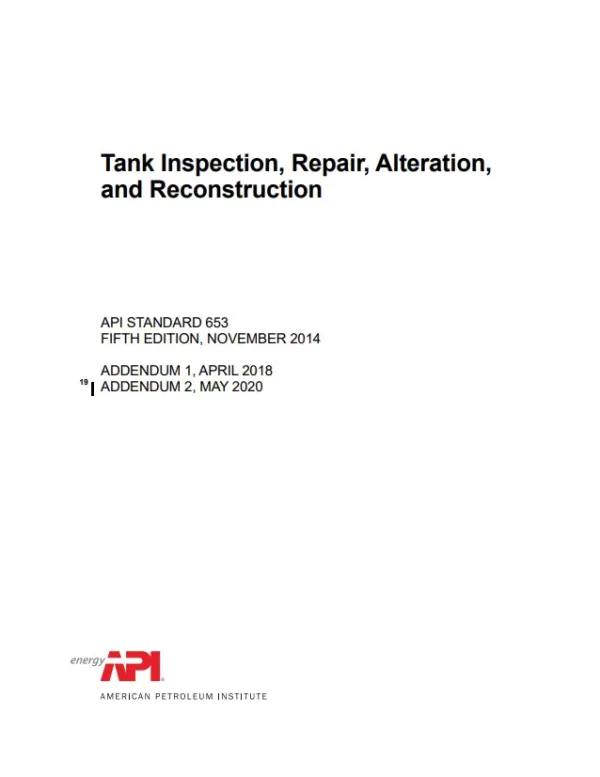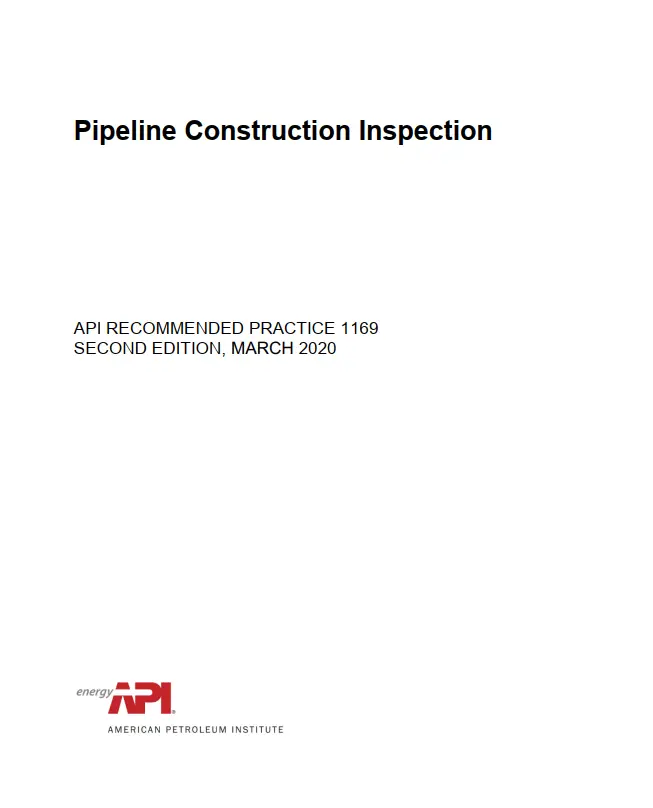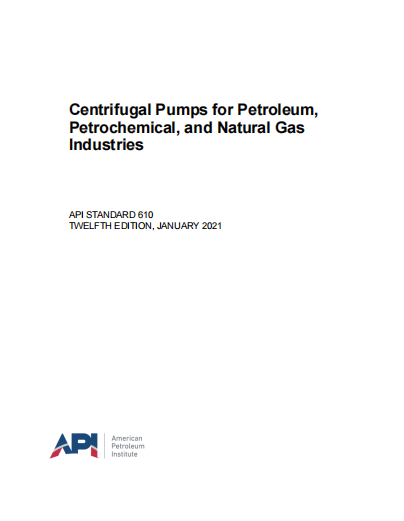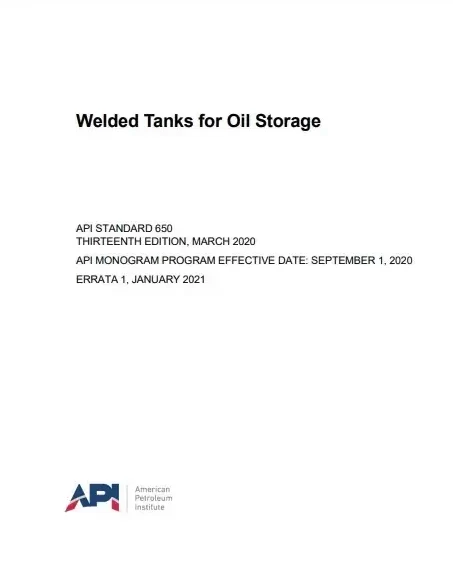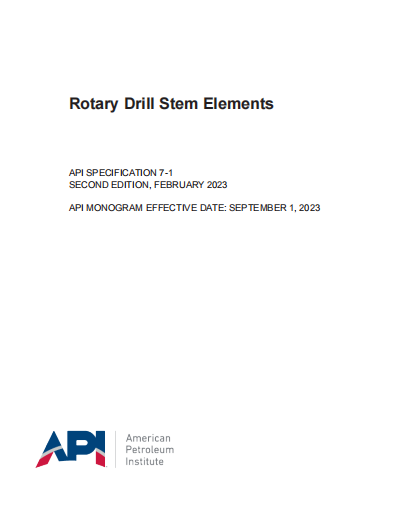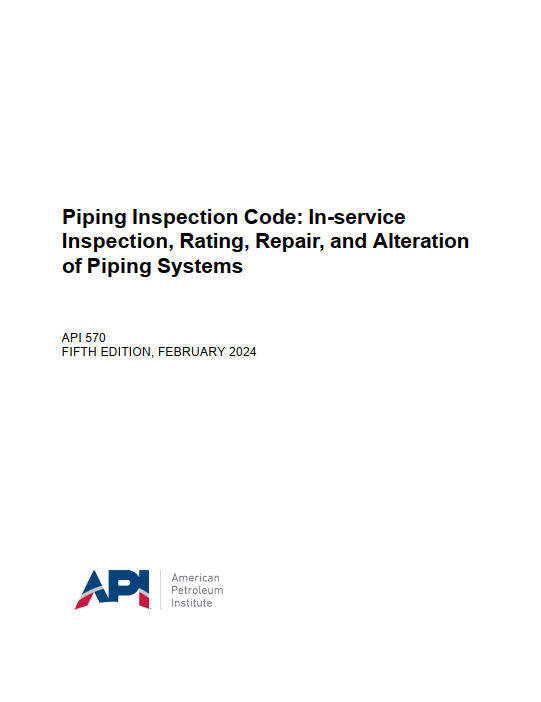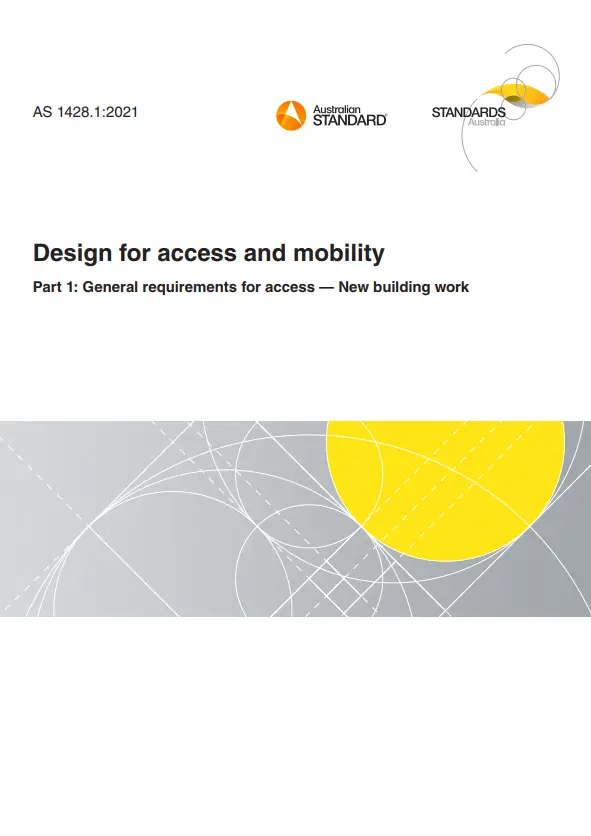API 653, 5th Edition – Tank Inspection, Repair, Alteration, and Reconstruction
API 653 covers steel storage tanks built to API Standard 650 and its predecessor API 12C. It provides mini- 05 mum requirements for maintaining the integrity of such tanks after they have been placed in service and addresses inspection, repair, alteration, relocation, and reconstruction.
The scope is limited to the tank foundation, bottom, shell, structure, roof, attached appurtenances, and nozzles to the face of the first flange, first threaded joint, or first welding- end connection. Many of the design, welding, examination, and material requirements of API Std 650 can be applied in the maintenance inspection, rating, repair, and alteration of in-service tanks. In the case of apparent conflicts between the requirements of this standard and API Std 650 or its predecessor API 12C, this standard shall govern for tanks that have been placed in service.
This standard employs the principles of API 650; however, storage tank owner/operators, based on consideration of specific construction and operating details, may apply this standard to any steel tank constructed in accordance with a tank specification.
This standard is intended for use by organizations that maintain or have access to engineering and inspection personnel technically trained and experienced in tank design, fabrication, repair, construction, and inspection.
This standard does not contain rules or guidelines to cover all the varied conditions which may occur in an existing tank. When design and construction details are not given, and are not available in the as-built standard, details that will provide a level of integrity equal to the level provided by the current edition of API Std 650 must be used.
This standard recognizes fitness-for-service assessment concepts for evaluating in-service degradation of pressure containing components. API RP 579, Recommended Practice for Fitness-for-Service, provides detailed assessment procedures or acceptance criteria for specific types of degradation referenced in this standard. When this standard does not provide specific evaluation procedures or acceptance criteria for a specific type of degradation or when this standard explicitly allows the use of fitness-for-service criteria, API RP 579 may be used to evaluate the various types of degradation or test requirements addressed in this standard.
COMPLIANCE WITH THIS STANDARD
The owner/operator has ultimate responsibility for complying with the provisions of this standard. The application of this standard is restricted to organizations that employ or have access to an authorized inspection agency as defined in 3.5. Should a party other than the owner/operator be assigned certain tasks, such as relocating and reconstructing a tank, the limits of responsibility for each party shall be defined by the owner/operator prior to commencing work.
JURISDICTION
If any provision of this standard presents a direct or implied conflict with any statutory regulation, the regulation shall govern. However, if the requirements of this standard are more stringent than the requirements of the regulation, then the requirements of this standard shall govern.
SAFE WORKING PRACTICES
An assessment shall be made of the potential hazards to which personnel may be exposed when conducting internal tank inspections, making repairs, or dismantling tanks. Procedures shall be developed according to the guidelines given in API Standard 2015, Recommended Practice 2016, and Publication 2217A that will include safeguard for personnel health and safety, prevention of accidental fires and explosions, and the prevention of property damage.
Special procedures may need to be developed for certain activities described in this standard that are not fully covered by the referenced API publications; for example, safety precautions for personnel accessing floating roof tanks that are in service, or gas freeing the bottom side of a tank. Finally, procedures must comply with any federal or state safety regulations pertaining to “confined spaces” or any other relevant provisions.
General Product Information:
| Revision | 5th Edition |
| Document Type | |
| Pages | 189 |
| Document Language | English |
| Publisher | American Petroleum Institute (API) |
| Status | Current |

